Watercraft usage for fishing has increased significantly in recent years. Much like a growing city whose infrastructure was not designed to handle excessive numbers of people and vehicles, many of our rivers, boat launches, and access points are dealing with issues related to an uptick in usage—and the resulting crowded boat launches and busy waterways are creating the potential for greater user conflicts.
The good news is, most waterways (just like highways) can withstand an increase in usage if users have the requisite knowledge and skills to keep traffic moving and incidents to a minimum. Unfortunately, unlike the requirements to obtain a driver’s license, the only requirement to operate most fishing vessels is the cash or credit required to purchase one—no course or training or testing to complete before hopping in the “driver’s seat.”
With so many new watercraft on our rivers, streams and lakes these days, there’s a growing number of new operators lacking essential skills and knowledge—and learning on the fly is not a smart idea when navigating many waterways. This is not to point fingers or make fun of newcomers. I made plenty of errors when I was new to boating. Below are a handful of suggestions and bits of advice I wish someone provided me when I was starting out.
Lot and Launch Etiquette
Use the Staging Area
Boat launches are for launching your boat into the water, not for rigging up. The only time you should pull into the launch area is when you’re ready to back up, drop in your watercraft, and immediately pull away your trailer and vehicle. The launch is like the on-ramp to a highway, which you only take when you’re ready to get on the highway. Use a parking spot or the staging area to rig up before launching your boat.
Backing up Your Trailer
Let's start off by agreeing it’s not a good idea to learn how to back up a boat trailer within a busy lot. Backing a trailer down to the launch is not difficult but it does take some time and practice to become competent at the task. Each year during my travels out west, I see newbies making multiple failed attempts to back their brand-new skiff down a ramp while a growing line of angry guides stacks up. If you fish a body of water with little to no traffic, then you have a great location to practice trailer parking. If not, then either practice during slow times of the day or head to an empty parking lot.
Also, make sure to know how deep you need to bury trailer rails to launch your boat. You might even consider hiring a professional guide one day both to take your fishing but more importantly, as someone you can ask about best practices for launching and rigging your boat.
Single spots vs. boat spots
For those not using a trailer to transport a boat or other watercraft, it’s important to understand that, at access points with boat launches, the short parking spots are meant for single vehicles (i.e. those without trailers) and the longer parking spots are meant for vehicles towing trailers/boats. I know this sounds like common sense but as Lefty Kreh once commented, “common sense isn’t all that common.”
There’s a nearby lake where I take my Penn State students fly fishing which has parking for single vehicles and those towing boats. The lake is also popular for hiking and biking. In talking with local anglers, I was made aware the number one issue boaters have on the lake is finding a parking spot during weekends as single car drivers (shoreline fishers, bikers, or hikers) often pull their vehicle into these trailer spots without thought.
These folks politely mentioned to me that the quickest way to get on the bad side of the local boaters is for my Penn State Students to park in these longer parking spots. It’s not that people don’t care-it’s just that they don’t know as most people have never pulled a boat trailer.

River Etiquette
Just because you can doesn’t mean you should
Just because you can physically float a body of water doesn’t mean you should. The reason I float is to access stream sections not easily accessible by foot. This could mean rivers with limited access or stretches of private property where you are still legally permitted to float. However, there are several excellent streams I fish that I don’t float because they offer lots of access for wading anglers. During peak hatch season, every bend is full of wading anglers so for me it doesn’t make sense to drift these streams during these times since I’ll be playing bumper cars with anglers standing in the water.
Years ago, while working at a local fly shop, an angler from the Midwest decided to visit one of our central Pennsylvania rivers during its famous green drake hatch. He told us he wanted to run his drift boat down a well-known section to fish the drakes. We advised him that he shouldn’t, given the water levels at the time and the fact there would be anglers standing shoulder-to-shoulder for miles. The next day in the shop several anglers came in to the shop to tell us about some guy banging his drift boat on every exposed boulder in the river, blowing up one dry fly opportunity after another. In short, he ruined the fishing for more than a few wading anglers that night. The fellow stopped in in the shop a few days after and mentioned he floated most of the evening before he could even find a spot to anchor his boat, mentioning the looks he got as he was floating past wading anglers. The moral of the story is simple—understand that some river sections are best for wading even though there’s enough water to physically float a boat.

Don’t fish in front of wading anglers
Another common courtesy is for boaters not to fish directly in front of wading anglers. If you float past a wading angle, take your flies out of the water and stop fishing until you float a good distance downstream. The distance you go depends on the culture of the individual river. On popular rivers you may give wading anglers 100’ before fishing. On lesser pressured fisheries you may want to give them a longer buffer. Every body of water has its own code. In densely populated cities, it’s common to walk shoulder-to-shoulder on walkways. In small rural communities, you give the other person lots of space. This is why I usually don’t like floating new waters without knowing the local river culture.
Ask wading anglers what side they prefer you pass on
Even if you know what side of river a wading angler is fishing, try to be respectful and ask them what side they want you to pass them on—even if it means having to row to the bank, get out of the boat, and slowly pull your boat behind them to avoid drifting through the water they’re fishing. Depending on the situation, this isn’t always possible, but you should do everything you can to avoid drifting over water wading anglers are fishing. If you don’t have the skills to maneuver the boat quietly around wading anglers, then you shouldn’t be behind the sticks. It’s also worth noting that if you find yourself constantly running into wading anglers, it might not be a good idea to be floating that section during that period.

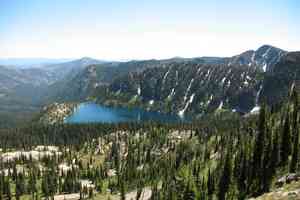


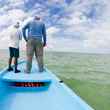
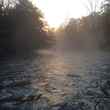


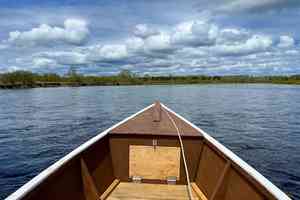
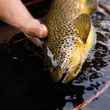

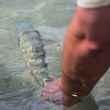
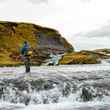

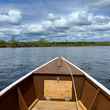

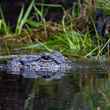
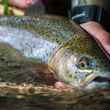

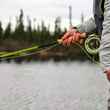

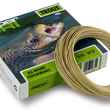
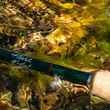
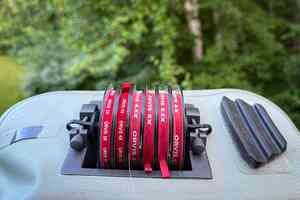
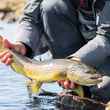
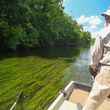
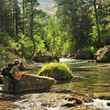

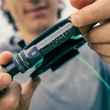
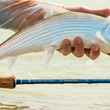
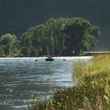
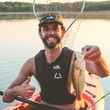
Comments
Geoff Roznak replied on Permalink
Good article, and spot on.
One thought for those impatient guides getting cranky about the newbie trying to launch their boat: Offer to help. Far more often than not, the gesture will be greatly appreciated.
Bolderado replied on Permalink
Great article George! Excellent advice regarding launching and staging. Out of respect for others, you should always be a 100% ready before you move to the ramp - oars in their locks, gear stowed, anchor installed, etc. As a private boat captain, I sometimes get intimidated at places like the A section of the Green River - Flaming Gorge. One ramp with 4 lanes. Lots of pressure becasue you backing up has to be perfect and there are always people watching. But if you are being respectful and doing your best, people will generally cut you some slack.
The words that really stuck with me, were about understanding the local culture. For me, this often involves carefully observing other boat captains, in particular, the local guides. I too use my boat to access water that is not accessible by land, particularly when I am fishing solo. When anchored, my preference is always to wade the section. At that point you become a wading fisherman. Recently, I was fishing the Henry's Fork and found some heads eating caddis on top. After I parked, got out and landed my first big brown, I attracted attention. Another boat anchored about 100 feet above me, which in Idaho, on the Henry's Fork is considered crowding. But what made it OK for me is the captain of the other boat shouted over and asked me if I was comfortable with their anchorage. It turns out that I was OK with it, they were on a different hole and I already had plenty of targets right where I was and they were not disturbing my water. In fact after landing two more fish he shouted over again and asked what fly I was using!
Being courteous is always the best policy. No one is perfect, so if you make a mistake and crowd that wading fiaherman, apologize! -Bolderado
Anonymous replied on Permalink
This is not true! Most states require a coast gaurd approved boaters license to operate a vessel with anything more than a 15hp motor!
Tom Reilly replied on Permalink
You see a lot of "interesting " things at launch ramps. Drift fishers vs. wade fishers is an issue at times. In Michigan the bigger issue is wade fishers vs. floatillas of tubers (usually alcohol fueled).
Geoff Roznak replied on Permalink
The idea of any group using public water vs. any other group is absurd, if we think about it.
No one has any more rights or entitlement than anyone else.
Pages